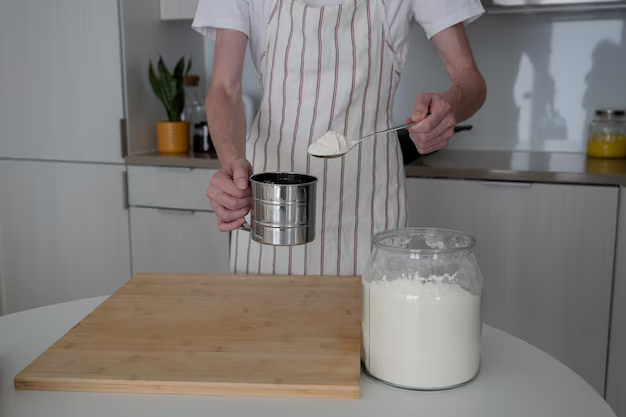How to Maximize the Freshness of Your Milk: A Complete Guide to Refrigerator Storage
Have you ever found yourself pouring milk into your coffee, only to discover it's sour? It's a universal dilemma that many face. Understanding how long milk stays fresh in the refrigerator is essential for reducing waste and ensuring that your breakfast or ingredients are fresh. Let’s delve into how you can optimize milk storage and keep your dairy fresh.
Understanding Milk Shelf Life
Factors Influencing Milk's Freshness
Milk's shelf life in your refrigerator is usually between 5 to 7 days after the sell-by date. However, this can vary based on several factors, including:
Pasteurization and Homogenization: These processes kill bacteria and extend milk’s shelf life. UHT (Ultra-High Temperature) milk can last longer, even without refrigeration until opened.
Storage Temperature: Keeping your refrigerator at or below 40°F (4°C) is critical for preserving milk and slowing bacterial growth.
Type of Milk: Whole milk often spoils faster than low-fat or skim milk due to its higher fat content.
General Guidelines for Milk Storage
- Inspect Packaging Dates: Pay attention to the “sell-by” and “use-by” dates as a baseline for freshness.
- Purchase Considerations: Buy milk in quantities that your household can consume within a week to minimize waste.
The Best Ways to Store Milk in the Refrigerator
Optimal Placement Matters
Center Shelves Over Door Racks: Milk should be stored on the refrigerator’s center shelves, not the door. The door is the warmest part, subject to temperature fluctuations due to opening and closing.
Proper Sealing: Ensure the milk container or carton is sealed airtight. Exposure to air can hasten spoilage and alter flavor.
Importance of Consistent Temperature
- Regular Checks: Use a refrigerator thermometer to ensure consistent temperature, adapting settings if needed to maintain the ideal environment for milk and other perishables.
Additional Storage Tips
Here are a few extra pointers to ensure milk stays fresh and safe for consumption:
Don’t Pour Back: Avoid pouring unused milk from your glass back into the container as it introduces bacteria.
Wipe Down Containers: Clean the exterior of the milk carton or jug regularly to prevent bacteria transfer from dirty packaging to the refrigerator.
Common Misconceptions About Milk Freshness
Avoiding Myths for Better Storage Practices
Color and Smell Tests: Sourness and off-colors are clear spoilage signs, yet other changes might not be immediately apparent.
Date Labels: Understand that "sell-by" does not mean the milk is unusable the next day; it often remains safe and tasty for several days.
Purchasing Habits for Maximum Freshness
- Smart Shopping: Pick milk from the back of the dairy section, where cooler and newer stock is typically placed.
- Batch Planning: Consider your consumption rate and plan purchases accordingly to minimize waste and frequent store trips.
Understanding Varieties: From Cow's Milk to Plant-Based Alternatives
Exploring Different Milk Types and Their Shelf Lives
Cow's Milk Varieties: Whole, 2%, 1%, and skim milk all have similar storage needs but may spoil at slightly different rates.
Plant-Based Milk: Almond, soy, and oat milk tend to last longer unopened but have shorter refrigerated life spans post-opening.
Nutritional Benefits and Storage Applications
Each milk type offers unique nutritional benefits, and understanding storage practices ensures you get the most out of these products.
Practical Tips for Extending Milk's Shelf Life
Easily Implemented Practices
Segregate and Rotate: Use older milk first to ensure nothing goes to waste and avoid mixing old and new batches.
Monitor Odor and Taste: Regularly check for unusual smells or changes in taste to catch early signs of spoilage.
Key Takeaways for Milk Storage:
- Keep the refrigerator below 40°F (4°C).
- Store milk on center shelves, avoiding door storage.
- Seal containers properly to restrict air exposure.
- Check milk regularly for signs of spoilage.
What to Do When Milk Goes Bad
Handling Spoiled Milk Safely
Disposal Suggestions: Spoiled milk can be disposed of responsibly by pouring it down the drain with running water for proper sewer system handling.
Non-Culinary Uses: In some cases, spoiled milk can be used in gardening as a fertilizer, thanks to its nutrient content.
Alternative Non-Food Applications
If creatively inclined, turning milk into cheese or exploring its usability in non-food-related household tasks can curb waste.
Conclusion: Ensuring Longevity for a Staple Ingredient
Milk is an essential part of many diets, and knowing how to store it optimally can greatly extend its usability. By paying attention to storage techniques, understanding sell-by labels, and recognizing spoilage signs, you can ensure your milk remains fresh longer. Beyond the fridge, understanding the variety and uses of milk only enriches its role in your kitchen.
Practical Storage Tips:
- 🌡️ Temperature control is key: Keep it cold and consistent.
- 📦 Placement matters: Store in the right spot.
- ⏰ Observe dates, but trust your senses.
- 🚫 Avoid cross-contamination through careful handling.
Implement these practices, and let your milk enjoy a longer, fresher life in your refrigerator.
